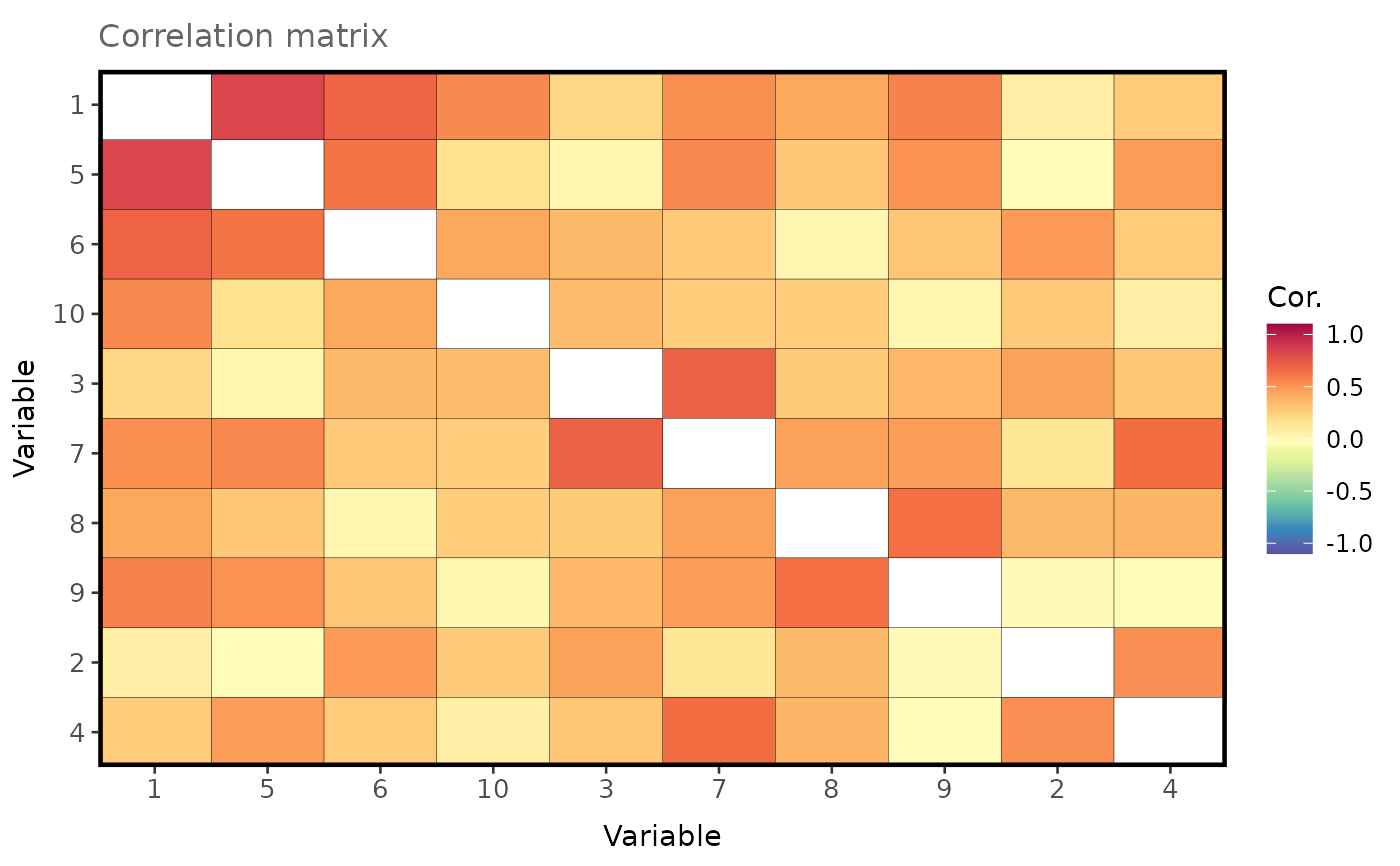Creates a symmetric n x n correlation matrix with user-defined minimum and maximum
correlations based on a continuous uniform distribution.
Arguments
- n
A scalar defining the dimensions of the correlation matrix.
- min.cor
A scalar defining the minimum correlation.
- max.cor
A scalar defining the maximum correlation.
Note:-1 < min.cor < max.cor < 1.- pos.def
When
TRUE(default isFALSE), the functionbendof the R package `mbend` is used to bend a non-positive (semi)-definite matrix to be positive (semi)-definite.- small.positive
Argument passed to
bendwhenpos.def = TRUE(default is 1e-8). Eigenvalues smaller thansmall.positiveare replaced by this.
Note:0 < small.positive < 0.1.
Value
A symmetric n x n correlation matrix. When pos.def = TRUE,
the correlation matrix is guaranteed to be positive (semi)-definite.
Examples
# Simulate and visualise a random correlation matrix with 10 columns and rows.
cor_mat <- rand_cor_mat(
n = 10,
min.cor = -0.2,
max.cor = 0.8,
pos.def = TRUE
)
#> Unweighted bending
#> max.iter = 10000
#> small.positive = 1e-08
#> method = hj
#> Found a correlation matrix.
#> Convergence met after 14 iterations.
plot_matrix(
mat = cor_mat,
order = TRUE
)
